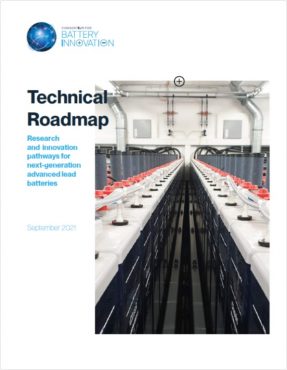
Our guest blogger Niamh Owen-McLaughlin, communications officer for the Consortium for Battery Innovation (CBI), reports from ESACon20, the first virtual energy storage conference on our calendars since the COVID-19 pandemic began. The conference was held August 24-27 and this year’s theme was “Electrification and Resilience: We’re All in This Together.”
Organized by the U.S. Energy Storage Association, the move online did not disappoint. With keynotes from the U.S. Department of Energy (DOE) and exhibitors from across the energy storage sector engaging in an interactive discussion via live booths and networking lounges, the outcomes of the event were clear: The demand for clean, renewable energy storage is continuing to soar, and a range of technologies are needed to fulfill this clean energy transition.
With ESAConTV live throughout the 4-day event, attendees had a steady stream of content covering all aspects of energy storage: markets, technologies, development and policy.
Day 1: Relying on a Domestic Energy Supply
DOE’s Deputy Secretary of Energy, Mark W. Menezes told attendees that “energy storage has the potential to fundamentally change the energy landscape.” With the dawn of the Energy Storage Grand Challenge, the message from Menezes to “innovate here, manufacture here, deploy globally” resonates strongly with the U.S. lead battery industry which has a successful home-grown manufacturing and recycling base.

Our industry has a clear opportunity to continue innovation in lead batteries to grasp future energy storage opportunities, with the prediction that energy storage is “the next great chapter in a story of American energy innovation” a resounding message. CBI’s technical roadmap has set energy storage as one of the pillars of future research work to enhance lead battery performance for this application.
Day 2: Inside the Virtual Classroom with Industry Experts
CBI organized a special learning lab to share some of the exciting new research underway in lead battery technology, with a specific focus on energy storage applications given by CBI Technical Manager Dr. Matt Raiford. Angie Rolufs from Paragon shared upcoming opportunities in the U.S. for microgrids and fast-charging EV stations utilizing lead batteries, followed by Dr. Frank Fleming from EAI debuting CBI Battery Match, a new tool launched at ESACon20 to match energy storage end-users with the best lead battery for their systems.
With 100 attendees, the CBI learning lab ended with a panel discussion highlighting the significant opportunities to further develop the performance of lead batteries through research and innovation. It also emphasized some of the exciting next-generation developments in technology such as bipolar lead batteries and lead-carbon, and demonstrated to attendees that there are many energy storage installations both in the U.S. and globally that are successfully being powered by lead batteries.
Day 3: A Global Look at Energy Markets and Demand
The U.S. Energy Storage Association has set an ambitious goal of 100 GW of new energy storage deployment by 2030 with a portfolio including batteries, thermal, mechanical and pumped storage hydro. Across the globe, demand is growing and the global markets session offered insight into other regions such as Europe where Patrick Clerens from the European Association for Storage of Energy (EASE) joined the panel to share that battery energy storage is critical to meeting Europe’s decarbonization goals.
Day 4: The Future of Energy Storage is Technology Agnostic
The CBI team ended the week by joining a panel discussion “What’s next?” with a key theme echoing from the ESACon20 event: The future for energy storage systems should include all battery technologies. The importance of energy storage being technology agnostic will help contribute to a successful transition to a decarbonized and electrified future, and the sector should install a range of batteries depending on their strengths and the technical requirements of the specific system.
One of the take-aways from ESACon20 is sustainable energy storage is not only vital for maximizing the utility provided by renewable sources. Energy storage is also a valid and cost-effective pathway to quickly upgrade the utility grid in the U.S. and elsewhere to handle imminent electrification needs for more data centers, EV charging stations, and greater societal energy needs. As the greater levels of vehicle electrification necessitate more charging stations, energy storage will be essential for not only demand reduction but total grid integrity. Lead batteries are poised to provide a key solution for these impending needs, especially due to their long record of safety and reliability.
Learn More
To access the presentations from CBI’s learning lab “Advanced Lead Batteries: Intelligent Energy Storage” please contact us here.
To view CBI’s interview with Nuvation Energy about the role of BMS for lead battery energy storage, click here.
To view CBI’s exhibitor showcase with ESA, click here.





